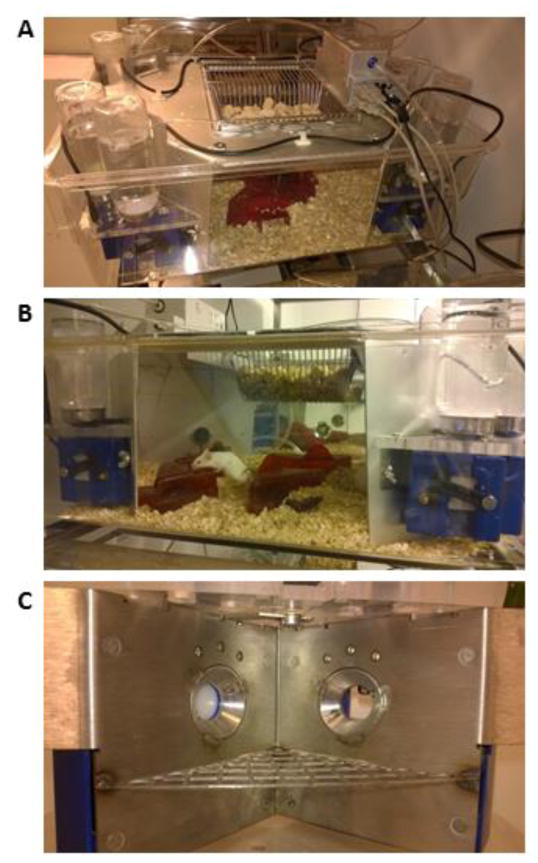Figure 3.
The Intellicage is an apparatus designed to fit inside a large standard cage of 20 cm high, 55 cm long and 38 cm wide at the base. A–B) Top and side view of the IntelliCage; C) Inside view of the conditioning corner. The apparatus itself provides four recording chambers that fit into the corners of the housing cage. Access into the chambers (inner dimensions 75×75×105 mm) is provided via a tubular antenna (50 mm outer and 30 mm inner diameter) reading the transponder codes. The chamber, equipped with a proximity sensor, contains two openings of 13 mm diameter (one on the left, one on the right) which give access to water-bottle nipples. These openings are crossed by photobeams recording nosepokes of the mice and the holes can be closed by small motorized doors, thus barring access to either or both water bottles in each corner. Above the openings, 3 LED’s are mounted for using as stimulus lights. In addition, air tube can be connected to the top of chamber for providing aversive airpuffs. Four triangular shelters are placed in the middle of the IntelliCage and can be used as sleeping quarters and as a stand to reach the food. Food is also scattered in the bedding. The IntelliCage is controlled by a computer with dedicated software, executing preprogrammed experimental schedules and registering visits to corner chambers, nosepokes to the door areas and licks at the nipple as parameters of mouse behavior.

